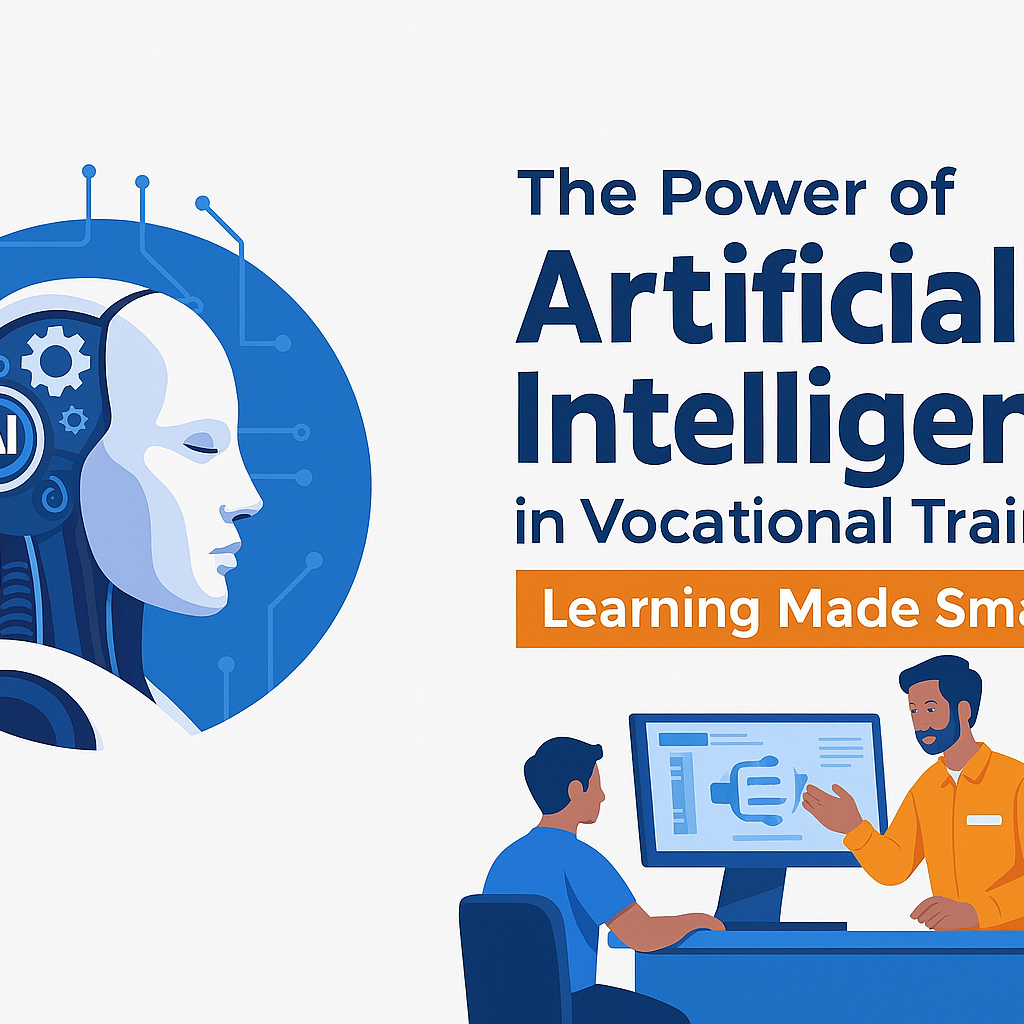In the modern era, technology is redefining every aspect of education and skill development. Among these innovations, Artificial Intelligence (AI) has emerged as one of the most transformative forces, particularly in the field of vocational training. Traditionally, vocational education relied heavily on observation, repetition, and manual practice. While these methods have been effective for decades, they often lack the flexibility, personalization, and interactivity required to meet the needs of today’s learners and industries.
AI is changing this landscape by making learning smarter, faster, and more accessible. Through intelligent digital tools and adaptive systems, it allows learners to engage more deeply with their subjects and develop hands-on skills with precision and confidence.
The Role of AI in Skill Development
Pakistan is home to a large population of young people who are eager to acquire technical and vocational skills. Thousands of students enroll each year in training programs such as auto mechanics, electrical work, plumbing, tailoring, carpentry, and welding. These programs are vital for building a skilled workforce that supports national economic growth and job creation.
However, many vocational institutes still depend on traditional classroom-based methods, where students observe instructors, take notes, and try to remember complex procedures without sufficient practice or feedback. In many cases, training materials are outdated, and students lack access to modern equipment and digital tools.
AI-powered learning is offering a new way forward. By integrating artificial intelligence into vocational education, learning becomes more interactive, personalized, and results-driven.
How AI is Transforming Learning
AI technologies enhance both teaching and learning in several ways.
- Instant Feedback and Error Correction:
Traditional learning often depends on instructors noticing and correcting mistakes, which can delay learning for large classes. AI eliminates this gap by providing immediate feedback. When a student makes an error during a quiz, simulation, or digital exercise, the AI system instantly explains what went wrong and how to fix it. This not only speeds up learning but also encourages students to experiment without fear of failure. - Personalized Learning Paths:
No two students learn at the same pace or in the same way. Some grasp new concepts quickly, while others require additional explanation or practice. AI adapts to each learner’s performance and automatically adjusts lesson difficulty, provides targeted exercises, and tracks progress. This ensures that every student receives the support they need to master their skills. - Data-Driven Progress Tracking:
AI systems collect and analyze learning data to provide insights into student performance. Trainers and institutions can use this information to identify strengths, weaknesses, and areas that require more attention. This data-driven approach helps improve teaching strategies and ensures that no student is left behind.
Ba-Ikhtiyar Jawan Project: Leading the Digital Transformation
The Ba-Ikhtiyar Jawan Project is at the forefront of bringing this digital transformation to vocational education in Pakistan. With a strong focus on empowering youth through technology, the project integrates AI-based learning tools and modern digital content into training programs nationwide.
Through this initiative, vocational students now have access to AI-enabled learning resources that are up-to-date, practical, and available in multiple languages, including Urdu and English. This makes technical education more inclusive, allowing learners from different regions and backgrounds to understand complex concepts with ease.
Instructors benefit as well. AI helps trainers deliver lessons more effectively by automating repetitive tasks, assessing student progress, and offering personalized guidance. This allows teachers to focus on mentoring and hands-on instruction while AI handles the technical side of performance tracking and lesson customization.
Building a Skilled and Inclusive Future
The introduction of AI in vocational training under the Ba-Ikhtiyar Jawan Project is more than just a technological upgrade it represents a shift toward a more efficient, inclusive, and skill-oriented education system. By combining human expertise with AI-driven learning, the project is preparing young Pakistanis for the demands of the modern workforce, where adaptability and digital literacy are essential.
Moreover, AI-based learning ensures that students are not limited by language, geography, or outdated materials. Whether a student is learning from a training center in Karachi, a technical institute in Quetta, or an online program in Gilgit, they can now access high-quality, interactive, and personalized learning experiences.
This initiative not only improves skill acquisition but also boosts employability, entrepreneurship, and innovation among Pakistan’s youth.
Conclusion
The Ba-Ikhtiyar Jawan Project stands as a symbol of Pakistan’s commitment to modernizing vocational education through technology. By introducing AI into training systems, the project is empowering young learners to gain practical skills faster, understand better, and perform more effectively in their chosen trades.
AI is not replacing instructors it is strengthening them. It is helping create a future where learning is more intelligent, adaptive, and accessible to everyone. Through this powerful integration of technology and education, the Ba-Ikhtiyar Jawan Project is truly making vocational training smarter and shaping a more skilled, confident, and empowered generation for Pakistan.

